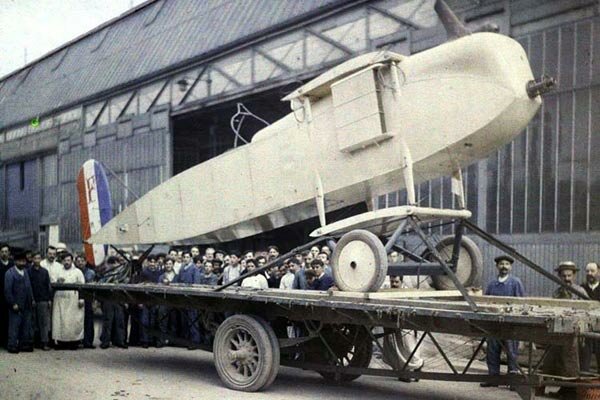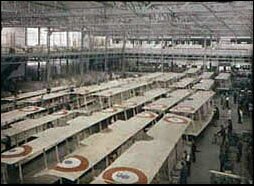
Unknown Prototype
The picture was taken outside the Farman aircraft factory in France. The airplane is of an unknown type. Some specialists doubt whether this plane ever advanced much beyond this prototype stage.
The trademark 'F' on the tail, as well as the shape of the rudder, indicate that it's a true Farman. The clear doped linen finish suggests that the picture was taken no later than mid 1917. The observer's gun mounting (if that's what it is) looks to pre-date the 1918 standard Scarff ring.
The Farman company designed other two-seaters, such as the F.30 and F.31, but these were fitted with a Salmson radial engine and a Liberty in-line, respectively - the engine in the photo doesn't look like either of these powerplants. However, there are definite similarities between the nose of a Farman 31 and the nose of this aircraft. On the other hand: both the F.30 and F.31 had fixed vertical fins, and not just a rudder on its own like the machine in this photo.
 The picture on the right shows the inside of the Farman Aircraft Factory.
The picture on the right shows the inside of the Farman Aircraft Factory.
Born to British parents, the brothers Henri and Maurice Farman both became aeroplane designers. In 1912 the brothers merged their interests in the Farman works at Boulogne-sur-Seine, making many planes of their characteristic pusher biplane type for military and training purposes. They were extensively used for artillery observation and reconnaissance in World War I, not only by the French, but the Belgians, the Australians and the Russians flew them as well.
In 1917 the Farman brothers introduced the “Goliath”, the first long-distance passenger plane, which from 1919 made regular flights between Paris and London, greatly stimulating commercial aviation in France and the rest of Europe. The French government nationalized the factory in 1938.
![]() We are indebted to Gareth and Adrian who, on the , supplied information about the aeroplane on the picture above.
We are indebted to Gareth and Adrian who, on the , supplied information about the aeroplane on the picture above.
![]() Click on the picture to see the next one in this Color Photographs series, or click here to go back to the summary page.
Click on the picture to see the next one in this Color Photographs series, or click here to go back to the summary page.